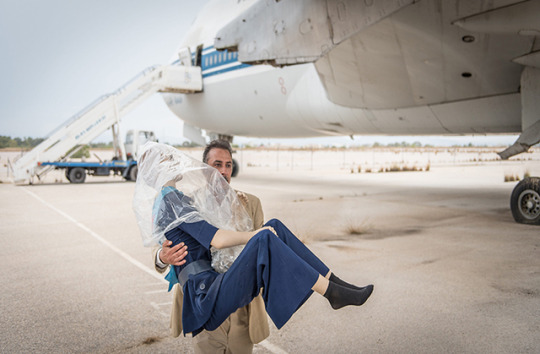#Naeem Mohaiemen
Text

Se solo avessi saputo
chiederei di riavere indietro il mio cuore
non posso più sopportare il fuoco, il bruciore.
Naeem Mohaiemen
_____ Arina Vital.
60 notes
·
View notes
Text
Se solo avessi saputo
chiederei di riavere indietro il mio cuore
non posso più sopportare il fuoco, il bruciore.

Naeem Mohaiemen
8 notes
·
View notes
Text
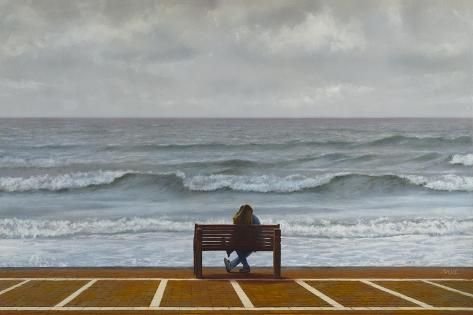
Se solo avessi saputo
chiederei di riavere indietro il mio cuore
non posso più sopportare il fuoco, il bruciore.
|| Naeem Mohaiemen
0 notes
Photo

Naeem Mohaiemen, still from Tripoli Cancelled, 2017, digital video (color, sound), 95 min.
28 notes
·
View notes
Photo
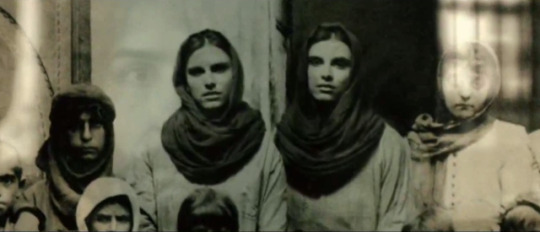
Kör oldum
kaç kere.
baktım göz yaşlarıymış, görüşümü kapayan. Bütün vücudum acılarıyla yoğruldu. 138 dakikalık filmi 160 dakika da izleyebildim. Yarabbi şükür diyip dilimi tuzladım. Kesik (2014), sıradışı bir ustalıkla, nispeten sert ve muzip diline alışık olduğum Fatih Akın’dan beklemediğim bir filmdi açıkçası. Sen neymişsin be abi! Bu hikayeyi yazmak, yeniden gözden geçirmek, ötelere berilere gitmek ve bütün o detayları film ekibiyle tek tek dokumak oluşturmak ve ortada taş gibi bir eserin çıkması her işe nasip gelmez. Ama Kesik adeta ‘Bir Fatih Akın filmi öner’ sorusuna vereceğim yeni bir cevap olacak.
Bu seyir yolculuğu bana, haberim yokken çalınmış hafızamı geri verirmişçesine bir mertlikle davrandı. İçimden, zihnimden, hafızamdan geçti bütün izler. Geçti kapıdan içeri. Sefalar buyurdu, bende gönül dizimi kırıp dinledim hikayesini. Birlik ruhu, dirlik ruhu. Nedir şu İbn-i Haldun’un asabiyye dediği? Bunca göç ve yol görmüş, geçirmiş beşerin her bir şahitliğiyle taşıdığı kıymetli yaşanmışlığını hangi sınır, hangi çizgi hangi resmi tarih yazımı ifade edebilir?
Elimi tuttu ve ben sormadan anlattı. Baş kahramanının dilsiz kalması filmin yoğunluğunu aktarabilmekte filmin kızarmış ekmeğine yağ sürüyor. Konuşamamak o kadar da kendini hissettirmemeye başlıyor bir süre sonra, çünkü insanlar insanlıklarında bu sorunları insanca çözüyorlar, ancak insana insan olarak yaklaştıklarında bu oluyor. Kesik, bu karşılaşmalarla dolu. Günümüzdeki aşırı kalabalığın sosyal savunma mekanizmamızı uzaya taşırken, bu filmde insanların insan seviyesinde, doğmadan tanış olmuşlarcasına bir sınıfsızlıkla ilişkilendiğini görmek çok kıymetli, unuttuğumuz bir beşer deneyimi. Bizi sosyal medya kanalları mı mahvetti Arzu? Yoksa cep telefonları mı? Ama onlar da iyki var dimi ama.
Dost olmak ne demektir? Kollamak, tanımak, haliyle hal olmak ne gerektirir? Siz hiç Havana’daki yarlarınızı arayıp sordunuz mu? Fas’taki yoldaşlarınızla selamlaştınız mı? Kaç vakit seni seviyorum sözcükleri düştü ağzınızdan Tayvan’daki dostlarınıza karşı? Bu film özellikle bana dost olmanın ne anlama geldiği, insan olmanın ne anlama geldiği ile ilgili çok şey anlattı. Gözümde canlanmaz mı şimdi bir hayalet güruh, unutturulmaya bırakılmış, gitgide rengi atan bir kalabalık? ‘Arkalarını çevirin!’ Sırtımız çevrik yaşamak nasıl bir sağırlık hali? Yaralarından akmış, kuruyan kana bakmak gibi bu filme bakmak. Canı acımamış geçmişlerimizin yerine de canımızı acıtan bir film.
Kesik, yalnızca karartılmış, üstüne kalın botlarla basılmış tarihi gerçekliklerin hafızalardaki kesikleri değil; aynı zamanda hala toprak savaşlarının süregeldiği arkaik bir dünyayı, henüz vatan söyleminin bile ulusal bir nitelik kazanmadığı bir dönemi günümüz milliyetçi ve ideolojik tarih kurgularının çarpıtmasına olan bir saldırıyı da ifade ediyor. Filmdeki çatışma ve karşılaşmaların olay örgüsünü dantel gibi ‘çokköklü ve çokboyutlu sosyokültürel olguları’yla var eden detaylar, izleyicide karakterler arasında dost-düşman gibi bir ikilik veya karşıtlık duygusu uyandırmaktan uzağa düşüyor. Kıymetlı tarihçi Cemal Kafadar’ın ifadesiyle ‘düz, çizgisel anlatıların ideolojik cilasının kolay döküldüğü’nün sinemada bir örneği olarak Kesik çok değerli bir sinema eseri. Beşerin inşa’ları ve icat’larının ne kadarı kendi naçizane kararlarının bir eseri ve ne kadarı dışardan bireye empoze edilen bir karar? 28 Nisan’da Salt Beyoğlu’nda son nefesini verecek olan Naeem Mohaiemen sergisinin metninin son cümlesi şöyleydi:
(sergi) hikâyelerdeki karakterlerin devlet kontrolündeki tarih yazımının yöneticileri mi, yoksa tutsakları mı olduğunu sorgulamaya çağırır.
Kesik’te gördüğümüz tarihi şekillendiren beşer, Naeem’in sergisinin başlığında (Makbul Tarihin Tutsakları) belirttiği seçimin adeta perdede izdüşümüdür. Kesik’teki insanlar kendi iradelerini kullanma özgürlüğünü bulduklarında tarihe bıraktıkları yalnız kendilerinin bir el yazısı kalıyor. Kaç kişi okuyabiliyor? Dünyanın her bir yanında tarihi yazma ithamlarıyla durmadan yola devam eden otoriteler bu ‘tercih edilmeyen, zaman içinde terk edilen ve unutulan’ gerçekliklerin görünmezleşmesine mahal verirken, Kesik, ezber bozarak görünmeyene kendini göstermesi için mahal ve zaman tanır. Cemal Kafadar ‘Kendine Ait Bir Roma’da şöyle der:
geçmişin en az bizim kadar incelikli insanlarının bu kavramların içini nasıl farklı şekillerde doldurduklarına ve sürekli dönüştürdüklerine yakından eğilmek gerekir.
Fatih Akın, Kafadar’ın sesini duymuş gibidir. Hayret kapısını ardına kadar açmış ve önüne yerinden oynamaz koca bir taş koymuştur. Baş kahramanlık öğesi, kollektif bir kimlik kurmak uğruna kurban gitmiştir. Geleneksel anlatıdaki protagonist-antagonist ikiliğine de bir kesik burdan gelir.
Kesik üstüne kesik, üstüne bir daha.
Cemal Kafadar’ın yine bir ifadesi filmdeki olayların gidişatı ve karakterlerin varoluş kaynağını aktarmak için adeta biçilmiş kaftandır: ‘Tarih cilveli, hürriyet efsunkar, zulüm kurnazdır.’ Hayatta kalmanın anlamı, kardeş olduklarımız, arkasından tekme attıklarımızın belirleyicisi ne dilimiz, ne dinimiz ne de kültürel geçmişimizdir.
ân geldimiydi
su dağı deler
ateş topraktan fışkırır
ya nicedir beşer
#kesik#çokboyutlu#çokperspektifli#çokkültürlü#film#fatih akın#the cut#eleştiri#tarih#cemal kafadar#kendine ait bir roma#salt beyoğlu#Naeem Mohaiemen#sergi#kitap
7 notes
·
View notes
Video
youtube
Open House (Episode 5) | AT THE MUSEUM
On episode five of AT THE MUSEUM, MoMA PS1's Open House premieres a new season of exhibitions by artists Carolee Schneemann, Cathy Wilkes, Alvaro Barrington and Naeem Mohaiemen. See how curators and artists work together on final details in advance of the day-long celebration in a brand new episode.
#moma#museum of modern art#moma ps1#carolee schneemann#cathy wilkes#alvaro barrington#naeem mohaiemen
177 notes
·
View notes
Text
ESZTER SZAKÁCS ET NAEEM MOHAIEMEN
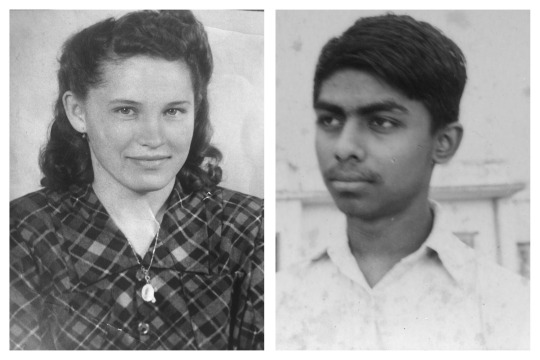
Mercredi 8 juillet juin à 18h (heure de Paris)
Wednesday July 18, 6pm (Paris time)
Bonjour à vous !
Nous vous espérons en bonne santé, vous, vos proches, où que vous vous
trouviez confiné·es.
Ce séminaire aura lieu en ligne via Zoom
Le nombre de places étant limité, Il est nécessaire de s’inscrire préalablement : [email protected]
Hello Everyone!
We hope you and your loved ones are well and safe.
This seminar will take place online via Zoom
The number of attendees is limited, please register at this address if you wish
to attend: [email protected]
« Solidarity Must Be Defended…but at what cost? »
Le séminaire exceptionnel d’Eszter Szakács et Naeem Mohaiemen est dédié à leur anthologie commune ‘Solidarity Must Be Defended’. Cette anthologie est consacrée aux solidarités transnationales dans le champ des arts visuels pendant la Guerre Froide, et sera publiée en août 2020 (conjointement par tranzit.hu (Budapest) – Van Abbemuseum (Eindhoven) – SALT (Istanbul) — Tricontinental (Delhi) – Asian Cultural Center (Gwangju)). Cette anthologie propose une célébration de la solidarité transnationale, sans ignorer la difficulté à incarner cette proposition.
Eszter Szakács est curatrice, autrice et chercheuse à Budapest. Elle travaille au sein de l'organisation tranzit.hu à Budapest depuis 2011, où elle publie le magazine international en ligne Mezosfera. Elle également co-dirigé la publication de Imagination/Idea: The Beginning of Hungarian Conceptual Art-The László Beke Collection, 1971 (Budapest, Zurich: tranzit.hu, JRP|Ringier, 2014) ; elle est commissaire du projet de recherche collaboratif "Curatorial Dictionary". En 2018, elle a organisé à tranzit.hu la première hongroise de Deux rencontres et un enterrement (Naeem Mohaiemen, 2017). Elle est membre de l'équipe curatoriale de l'initiative OFF-Biennale Budapest. Sa pratique s'articule autour des questions d'internationalisme, des méthodes de résistance culturelle, des relations entre l'Europe de l'Est et le Sud global, ainsi que de la recherche sous forme d'exposition.
Naeem Mohaiemen est un artiste combinant films, dessins, sculptures et essais dans ses recherches sur l'utopie socialiste, la décolonisation incomplète, la malléabilité des frontières, les inexactitudes mémorielles et la décomposition de la cellule familiale. Ses projets prennent souvent leur origine dans les deux repères postcoloniaux du Bangladesh (1947, 1971) et rayonnent ensuite vers des alliances transnationales improbables et instables (réseaux de mercenaires libanais, pirates de l'air japonais…). Naeem est l'auteur de Midnight's Third Child (Nokta, à paraître), de Prisoners of Shothik Itihash (Kunsthalle Bâle, 2014), et (avec Lorenzo Fusi) de System Error: War is a Force that Gives us Meaning (Sylvana, 2007). Lauréat d’une bourse Guggenheim (2014 : film-vidéo) et finaliste du prix Turner (2018), il est actuellement chercheur Mellon à l'Université de Columbia (New York), et chercheur principal au Lunder Institute of American Art (Maine).
[EN] This seminar by Eszter Szakács and Naeem Mohaiemen is dedicated to their common anthology project, Solidarity Must Be Defended…but at what cost? (Publication due : August 2020). It brings together projects on gestures and alignments within the visual arts around transnational solidarity during the Cold War. The point of departure for this anthology is a special issue of Mezosfera magazine (“Refractions of Socialist Solidarity”) edited in Budapest by Szakács in dialogue with Mohaiemen’s three-channel film Two Meetings and a Funeral (2017). This anthology proposes that transnational solidarity is always worth celebrating, but also extremely difficult to inhabit. (Publishers: tranzit.hu (Budapest) – Van Abbemuseum (Eindhoven) – SALT (Istanbul) — Tricontinental (Delhi) – Asian Cultural Center (Gwangju).
Eszter Szakács is a curator, editor, and researcher in Budapest. She works at the contemporary art organization tranzit.hu in Budapest since 2011. At tranzit.hu she is co-editor of the online international art magazine Mezosfera, co-editor of the book IMAGINATION/IDEA: The Beginning of Hungarian Conceptual Art—The László Beke Collection, 1971 (Budapest, Zurich: tranzit.hu, JRP|Ringier, 2014), and she curated the collaborative research project Curatorial Dictionary. In 2018, she organized at tranzit.hu the Hungarian premiere of Two Meetings and a Funeral (Mohaiemen 2017). She is a curatorial team member of the civil initiative OFF-Biennale Budapest. Her practice revolves around questions of internationalisms, methods of cultural resistance, relations between Eastern Europe and the Global South, as well as the exhibitionary form of research.
Naeem Mohaiemen is a visual artist who combines films, drawings, sculptures, and essays to research socialist utopia, incomplete decolonization, malleable borders, unreliable memory, and the decaying family unit. His projects often start from Bangladesh’s two postcolonial markers (1947, 1971) and then radiate outward to unlikely, and unstable, transnational alliances: Lebanese mercenary networks, Japanese hijackers, or a Dutch academic. He is author of Midnight’s Third Child (Nokta, forthcoming) and Prisoners of Shothik Itihash (Kunsthalle Basel, 2014); and co-editor (w/ Lorenzo Fusi) of System Error: War is a Force that Gives us Meaning (Sylvana, 2007). Naeem was a Guggenheim Fellow (2014: film-video) and a Turner Prize finalist (2018). He is currently Mellon Research Fellow at Columbia University, New York, and Senior Research Fellow (non-residential) at Lunder Institute of American Art, Maine.
Programmation et prochains rendez-vous sur ce site ou par abonnement à la newsletter : [email protected]
Pour regarder les séminaires antérieurs : http://www.vimeo.com/sysk/
Séminaire conçu et organisé par Patricia Falguières, Elisabeth Lebovici et Natasa Petresin-Bachelez et soutenu par la Fundación Almine y Bernard Ruiz-Picasso para el Arte
0 notes
Photo

Chris Steele-Perkins
- LEBANON. Beirut. Volunteers from Bangladesh fighting with Palestinians against the Israelis.
1982.
A photograph circulates, showing five men staring out of a window. Actually, only four look out; the last man breaks protocol and looks at the camera. The light has a soft glow. The stage is a bombed building. All five men wear military fatigues; the color must have been olive green.
Snapped by a Magnum photographer in 1982, the image is a teasing enigma. Arabic newspapers claim it as evidence of Bangladeshi fighters in the PLO (Fatah faction). Go a little deeper into the memory hole and sediments will darken the third world international.
Still, the light was beautiful.
(Naeem Mohaiemen - Abu Ammar is Coming / 2016 )
36 notes
·
View notes
Photo

Three channel video installation Two Meetings and a Funeral (2017) by Nadeem Mohaiemen at this year's Documenta in Kassel, Germany. This particularly scene speaks to the fascination with Sputnik in the global south where, for instance, an entire generation of Indians were named after the Soviet satellite.
#Naeem Mohaiemen#Two Meetings and a Funeral#sputnik#Soviet Union#space race#global south#documenta17
7 notes
·
View notes
Text
Terminal
Ella O’Connor
Terminal is a multi discipline exhibition located within City Gallery Wellington, it includes work from over ten artists from around the globe. All of the included work has a central point based around the site of the airport. The exhibition is open now and runs until the 14th of February 2021 (Valentine’s Day, a day of love, a day of a lot of airport happiness and heartbreak.)
The Terminal exhibition features many amazing international artists including; John Akomfrah (UK), Ed Atkins (UK), Marco Brambilla (Italy/US), Walead Beshty (US), Lauren Brincat (Australia), Thomas Demand (Germany), Simon Denny (New Zealand), Charles and Ray Eames (US), Andreas Gursky (Germany), Naeem Mohaiemen (Bangladesh/US), Adrian Paci (Albania), Alex Prager (US), and Taryn Simon (US).
I found that this exhibition had an impressive impact as soon as I entered the gallery space, the TV screens, large scale photographs and well placed props all drawing me in. It was really nice to see such a mixture of works from different disciplines come together so cohesively, the works flowed well together and all had strong visual connections. I think that everyone would enjoy and relate to at least one of these works, there really is something for everyone.
The layout of this exhibition seemed to be very well thought out and considered. Around each corner another surprise. I think that the juxtaposition of video and photograph works was successful, it kept it fresh. I found Thomas Demand’s Gangway (2001) super interesting, as I stood directly in front of the photograph my reflection made it look as through I were disembarking the plane, a very well done feature in this exhibition. Seeing a Gursky photograph in real life was also amazing, the quality of the photograph, its size and the meaning behind it was stunning, the emptiness of the runway, the possibilities it holds, fascinating.
My favourite experience of the exhibition was the video installation work The Airport (2016) by John Akomfrah. As soon as I walked into the dark red walled room I was captivated. The work was made up of three large screens, each showing a different moving image work, but all working together to tell a narrative. The complete work took almost an hour to view, but was worth every moment. The cinematography was flawless and the way you, as the viewer were forced to bounce from screen to screen made it very engaging and added an element of excitement.
Overall this exhibition was very successful, it was well thought out and looked as though a lot of planning had gone into the layout, concept and flow of the show. I think that the title is perfect as it encompasses all of the work on display and the shapes and scales of each piece were well considered. It is an exhibition that requires a lot of time to absorb, which isn't a bad thing, it is inviting to the viewer and an overall excellent experience.
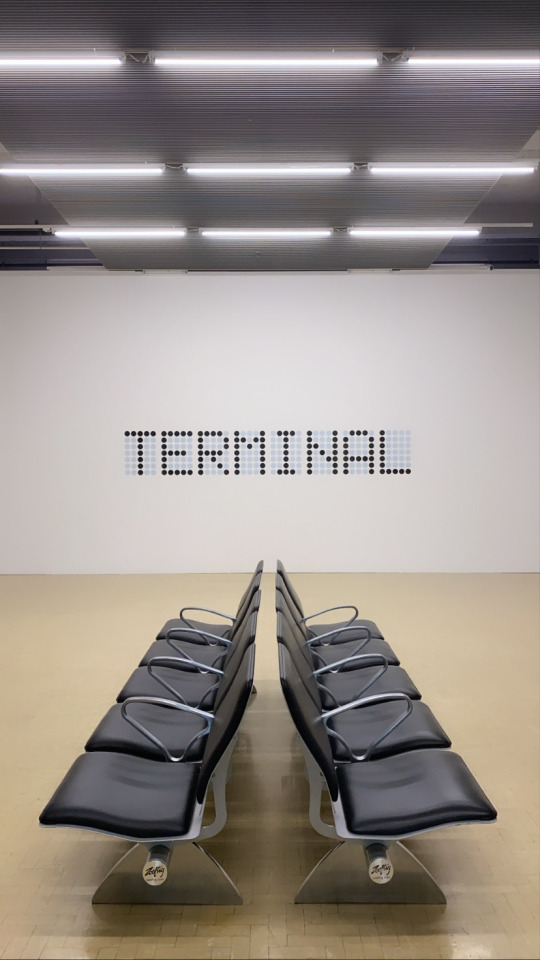

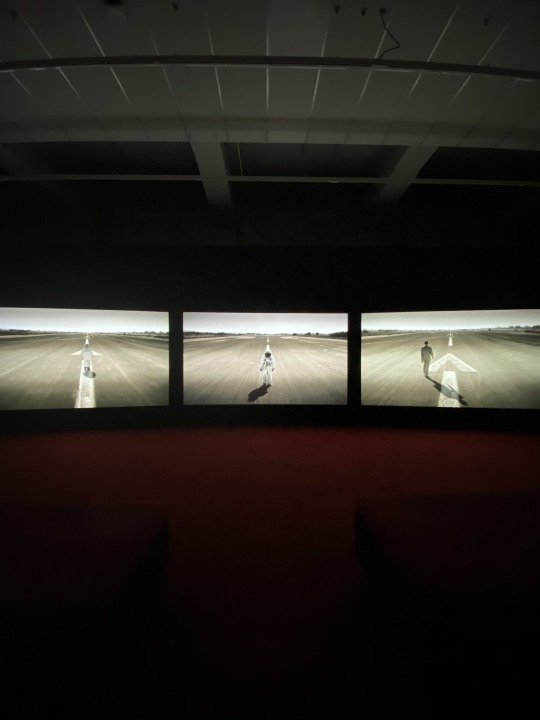
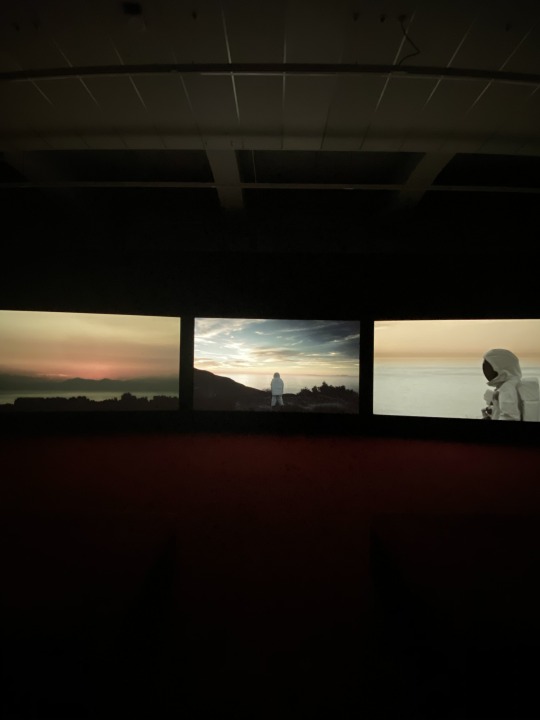


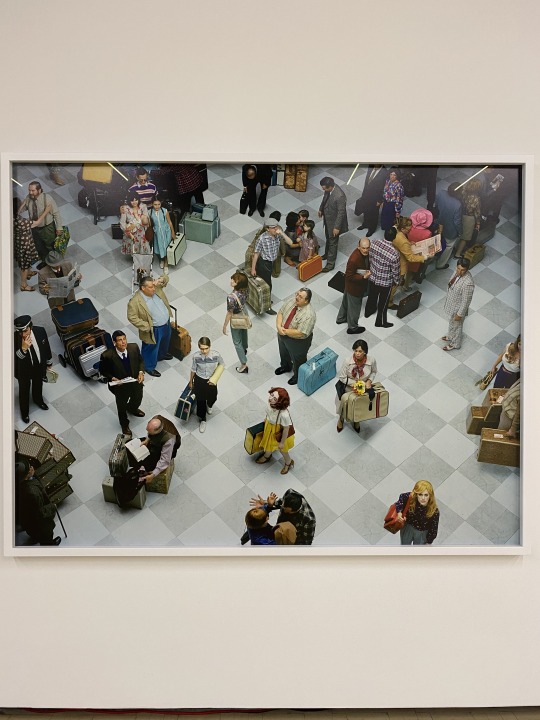

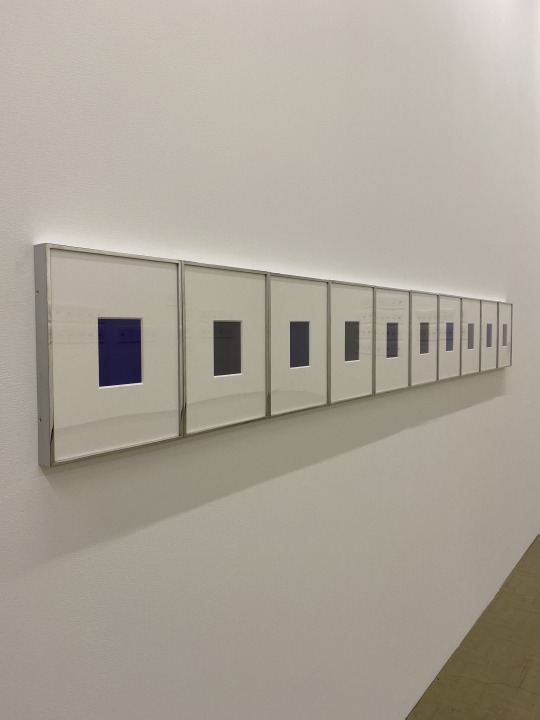

4 notes
·
View notes
Link
Great piece on the role of Islam in Hip-Hop by Naeem Mohaiemen.
Originally published in Sound Unbound: Sampling Digital Music and Culture (MIT PRESS, 2008), edited by Paul D. Miller (DJ Spooky, that Subliminal Kid)
2 notes
·
View notes
Text
Kapwani Kiwanga by Eye magazine
#POTD - Kapwani Kiwanga, Flowers for Africa, 2013 – ongoing by Eye magazine
In April 1955, representatives of 29 newly, and struggling-to-be, independent countries from Asia and Africa gathered for a conference in Bandung, Indonesia, to champion common interests of national sovereignty, decolonisation, anti-imperialism and economic development. The international meeting of new geopolitical alliances represented 54% of the world population at the time and signalled a…
View On WordPress
#Alán Carrasco#Black Audio Film Collective#Dana Whabira.#Daniela Ortiz and Xose Quiroga#Flickr#Hiuwai Chu#IFTTT#Jeffrey Gibson#Kapwani Kiwanga#Lothar Baumgarten#Maria Thereza Alves#Mariana Castillo Deball#Maryam Jafri#Munem Wasif#Naeem Mohaiemen#Pala Pothupitiye#POTD#Sandra Gamarra#Superflex#The Otolith Group
0 notes
Photo
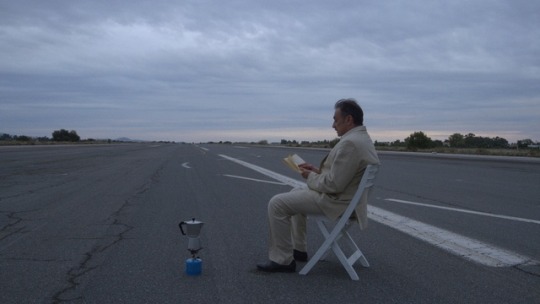
Naeem Mohaiemen. Tripoli Cancelled. 2017
38 notes
·
View notes
Text
RAW Académie Session 7 (Dakar)
Deadline: 30 June 2019 + only the first 75 applications will be considered for review

RAW Académie is an experimental residential program for the research and study of artistic and curatorial practice and thought. The program takes place over 7 weeks in Dakar. It is dedicated to a dynamic reflection on artistic research, curatorial practice and critical writing.
Session 7: “Images for our times” will be led by the artist and filmmaker Eric Baudelaire (FR). It will take place from October 28 to December 13, 2019.
Images for our times will be structured around rituals and repetition. The program will not be production focused, but fellows will be encouraged to work on small projects, make images in Dakar, and share them with the fellows during dedicated weekly viewing sessions.
The curriculum will be shaped each week by the visiting faculty members: filmmakers and artists John Akomfrah, Mati Diop, Alain Gomis, Joana Hadjithomas and Khalil Joreige, Alfredo Jaar, Naeem Mohaiemen, curator and writer Rasha Salti, and film scholar Nicole Brenez.
Criteria
This session is open to filmmakers and artists interested in working with moving images, as well as film programmers, curators, researchers, and art historians with a commitment to the moving image.
Successful applicants are required to commit to being in Dakar throughout the duration of the session.
Applicants must be a graduate of an art school, curatorial programme, architecture school or any department of humanities.
Applicants must be fluent in either French or English and have a fair knowledge of the other. Successful applicants will be skype interviewed in both languages for assessment.
Benefits
The programme is tuition-free. Successful applicants will have to cover their travel arrangements (including visa), accommodation, insurance and costs of living in Dakar for 7 weeks. Depending on the work schedule, simple meals/snacks may be offered occasionally.
Details
Apply
Image: Eric Baudelaire, Also Known As Jihadi (still), 2017. Film.
3 notes
·
View notes
